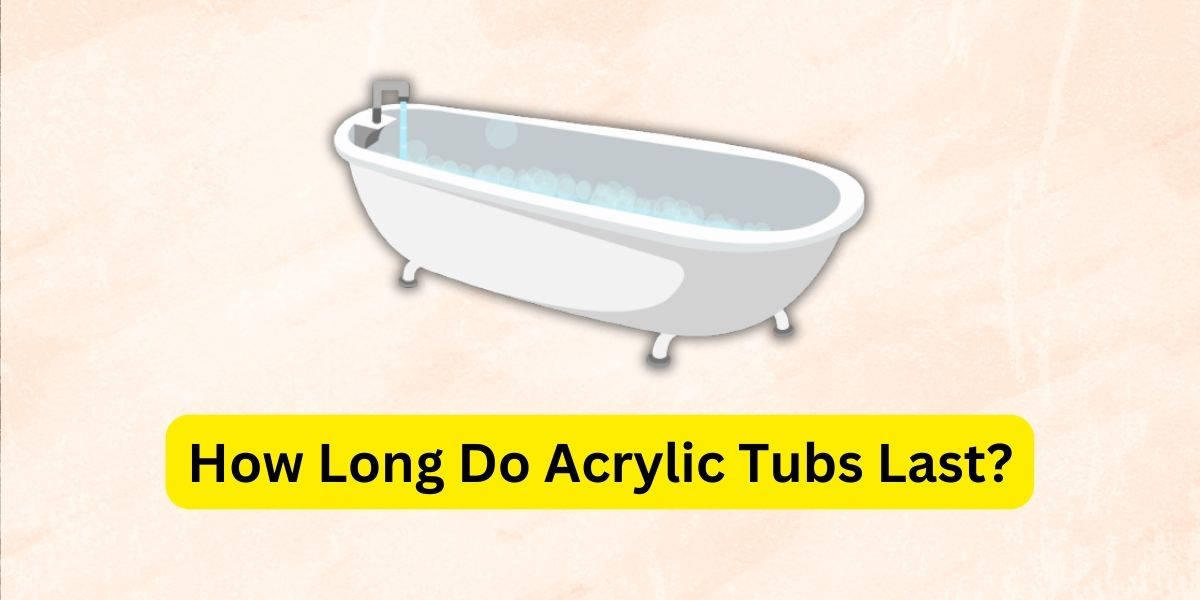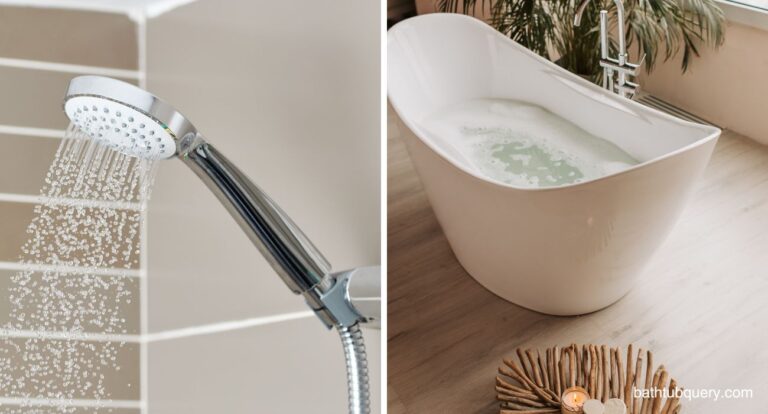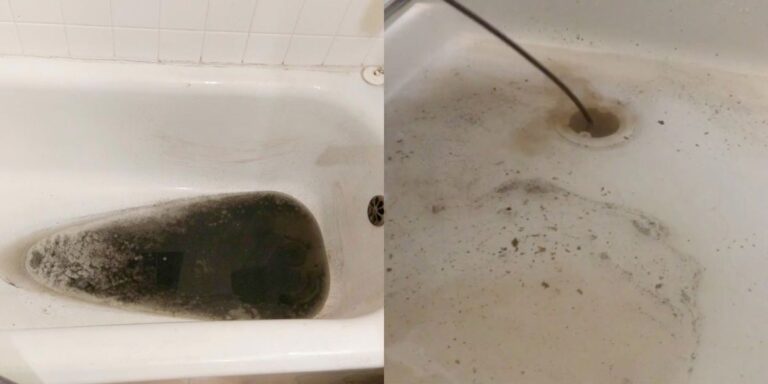How Long Do Acrylic Tubs Last? How to Extend The Lifespan?
I often get asked – how long can you expect an acrylic tub to last in your home? Acrylic has become a popular bathtub material in recent decades due to its durability, easy maintenance, and glossy appearance. But even the best acrylic eventually shows signs of wear. So what is the average lifespan of an acrylic tub?
Through my years in the industry, I’ve found most quality acrylic tubs will last 15-20 years with proper care and maintenance. Now I know that’s quite a wide range! The actual lifespan depends on several key factors:
- Frequency of use – Is it the main tub used daily by a family or only occasionally used? Frequent baths and showers will wear down any tub faster.
- Cleaning habits – Gently cleaning after each use versus infrequent scrubbing makes a difference. Harsh cleaners can damage acrylic, so always use safer cleaners.
- Water quality – Softer water is easier on tubs than hard water that leaves mineral deposits.
- Quality of the acrylic – Not all acrylic sheets are equal. Thicker gauges reinforced with fiberglass last longer.
- Installation – Proper installation according to manufacturer guidelines also impacts durability.
Of course, accidents also happen! Dropping heavy objects in the tub can chip the surface. So can impacts from kids playing roughly. Damage from these types of accidents may shorten the lifespan.
Overall, I like to think of acrylic tubs as a long-term investment for your bathroom. With appropriate care, 15-20 years of reliable use is a reasonable expectation. And there are things you can do to maximize lifespan, which I’ll get into shortly.
What Makes Acrylic Bathtubs So Durable?
Now you may be wondering, what is it about acrylic that makes bathtubs last so long compared to other materials? After all, porcelain cast iron tubs had been the standard for generations until acrylic gained popularity in the 1950s-60s.
There are a few reasons why acrylic performs well as a tub material:
- Acrylic sheets reinforced by fiberglass – The acrylic provides a durable, glossy outer finish. But fiberglass reinforcement gives strength and rigidity to prevent cracks.
- Resists chipping and cracking – Unlike porcelain, acrylic sheets are flexible. This cushioning effect means chips and cracks are less likely.
- Non-porous surface – The glossy acrylic finish resists stains and is easy to clean compared to more porous materials.
- Lightweight for easy handling – Preformed acrylic sheets make installation relatively easy compared to cast iron.
- Color options – Acrylic can be formed in nearly any color, unlike white porcelain. Popular options include white, biscuit, and almond.
- Affordable compared to other materials – Acrylic tubs are cost effective and available in a range of budget options.
Of course, acrylic isn’t indestructible. But you can see why it became a game changer for tub design and performance. Easier maintenance combined with long-lasting durability makes acrylic a go-to choice for many homeowners.
Do Acrylic Bathtubs Eventually Wear Out?
Now 15-20 years may seem like a long time. But nothing lasts forever, right? So what are the signs that an acrylic tub has reached the end of its functional lifespan?
Here are some clear indicators that your acrylic tub is worn out:
Visible scratches and stains
Even with proper care, tiny scratches develop in the glossy finish over time. And some stains can become set.
Small dents and dings
Dropped bottles, toys, and other impacts take a toll. The acrylic cushions but can’t prevent all damage.
Discoloration
Acrylic can change color, especially with exposure to sunlight. A once white tub may turn an almond hue.
Cracks around fixtures
The caulk around faucets and drains inevitably wears down, allowing moisture seepage that damages underlying acrylic.
Sagging bottom
After decades of use, the reinforcement layers can deteriorate, causing the tub floor to slope.
Leaks
Chronic small leaks around fixtures gradually loosen connections. This signals bigger problems.
It’s a reality that the acrylic eventually wears down if you use a tub long enough. The material itself isn’t designed to last forever. Of course, some of this wear is preventable with proper maintenance. But expect to replace an acrylic tub every 15-20 years.
How to Extend the Lifespan of an Acrylic Tub?
To maximize the lifespan of an acrylic tub, keeping up with maintenance is crucial. Here are my top tips as a bathtub expert:
Use mild cleaners
Harsh chemical cleaners damage acrylic over time. Mild liquid soaps keep the surface gently cleansed.
Install bath mats or cushions
This prevents direct contact that causes scratches, especially on the tub floor.
Re-caulk annually
Prevent moisture from seeping under fixtures by maintaining the caulk seals.
Refinish worn tubs
Professional refinishing can remove scratches and discoloration, restoring the acrylic surface.
Avoid abrasive pads
Never scrub acrylic with anything rougher than a soft cloth to prevent scratching.
Clean after each use
Letting grime build-up makes the tub much harder to clean. Quick wipedowns keep soap scum from setting.
Check connections
Ensure drains and fixtures remain leak-free. Promptly re-tighten or reseal any connections that loosen over time.
Follow these tips religiously and an acrylic tub should last 15-20 years or more. But don’t expect it to be immune to wear forever. At some point, even well-maintained acrylic shows signs of age.
When Is It Time to Replace an Old Acrylic Tub?
So how do you know when it’s finally time to replace an aging acrylic tub? Here are some clear signals:
- Multiple large cracks or deep gouges – Surface scratches can be refinished, but deep cracks signal unrecoverable damage.
- Consistent leaks from fittings – Chronic small leaks that recur despite resealing indicate failing bonds and deteriorated acrylic.
- A noticeable slope on the tub floor – Over decades of use, the tub floor loses rigidity and begins to slant.
- Stains that can’t be removed – Some stains become permanent fixtures no matter how much you scrub.
- Failing drain assembly – A loose drain pipe or crumbling drain base indicates problems extending below the acrylic.
- Cheaper to replace than repair – With extensive repairs needed, replacement costs can become less than ongoing maintenance.
- Unappealing outdated color – After decades, you may want a tub color refresh not possible with refinishing.
Replacing an aging tub is a project but does not have to be a huge hassle. Acrylic tub units are quite affordable, often $200-500 depending on features. Installation can be DIY if you’re reasonably handy. Just be sure to uninstall the old tub properly to avoid damaging bathroom walls or flooring.
For me, when repairs start piling up and approach replacement cost, it’s easier to just invest in an entirely new acrylic tub. The key is getting a good 15-20 years from your initial tub purchase. Proper installation and maintenance are well worth it for decades of durable service.
Conclusion:
In closing, as an expert in the field, acrylic remains my top recommendation for long-lasting and affordable bathtubs. Take care of an acrylic tub and it will take care of you. Nothing lasts forever, but acrylic tubs fit the bill for durable value in the heart of your home.
If you have any other bathtub questions, feel free to reach out! I’m always glad to share my experience and perspective from years as a professional in the bath industry.
- Using Magic Erasers on Acrylic Bathtubs: My Experiences
- Acrylic Bathtub Stains That Won’t Come Out? Here’s How to Remove Them

William J. Bullock is a licensed plumber with over 15 years of experience installing and repairing bathtubs. He runs his own plumbing company in Greenville and serves residential and commercial clients. William is dedicated to providing honest, transparent advice to help homeowners make informed decisions about their bathroom renovations.
He has established expertise in selecting bathtubs, planning custom installations, diagnosing issues, and completing repairs. William aims to share practical tips and reliable recommendations based on extensive hands-on work. When he isn’t on a job site, William enjoys spending time with his family and volunteering at local community events. He takes pride in delivering quality service and enjoys helping people upgrade their homes.







